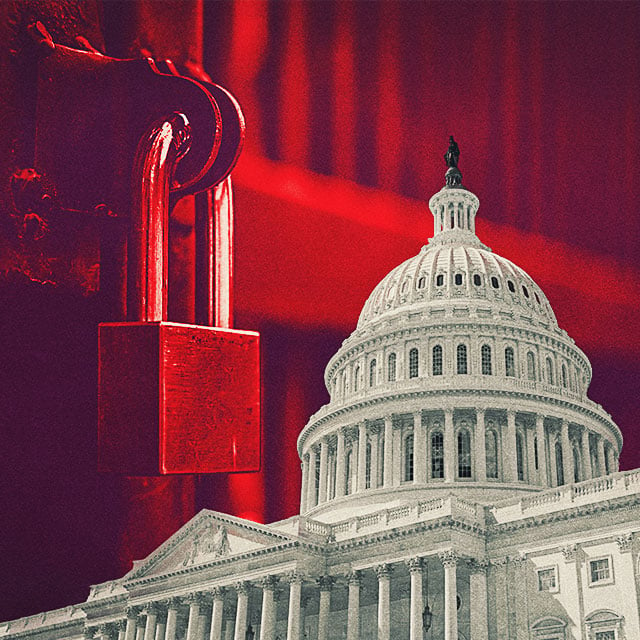What a Shutdown Means for Social Security, Medicare

House Speaker Kevin McCarthy has set up a test vote for Friday that “would slash federal spending by 8% from many agencies and toughen border security but has been rejected by Democrats and his own right-flank Republicans,” The Associated Press reported.
“Congress appears to be on the path of a shutdown,” Jeff Bush of The Washington Update told ThinkAdvisor Thursday in an email. “The bigger question is how does it end. There is little clarity about reopening. McCarthy is still between a rock and a hard place between his moderate and conservative wings of his party with no real progress.”
Economic Impact
Shutdowns “cost the economy,” said Andrew Lautz, senior policy analyst at BPC’s Economic Policy Program. “The 2018–2019 shutdown resulted in at least $3 billion in permanent economic damage — that’s lost GDP that the country did not get back.”
The shutdown — the longest in U.S. history — lasted 35 days, from Dec. 22, 2018, to Jan. 25, 2019.
Looking at the potential for a shutdown in 2023 and what it means, “12 out of the 12 appropriations bills are unfinished,” Lautz relayed, so if a shutdown were to last as long as the 2018–2019 shutdown, “we’d expect the economic damage to be greater and broader.”
Further, “it’s also a precarious time for the U.S. and global economies,” Lautz said. “There’s a lot of uncertainty in the market right now, and a lengthy shutdown would throw fuel on that uncertainty fire.”
Important services from “farm loans, to rural development to veterans assistance” could see interruptions, Lautz said.
Bush of The Washington Update added that “in a shutdown, the data preparation the [Federal Reserve] relies on will be impaired. If the shutdown is prolonged, it would deprive the Fed of the data they need to assess the need of an additional rate increase later this year.”
Also, “shutdowns don’t work,” Lautz said. “None of the previous shutdowns of recent years were successful in reversing America’s unsustainable fiscal trajectory; and recent shutdowns have also failed in their nonbudget policy aims.”
Preventing shutdowns also requires “short, middle-term and long-term bipartisan solutions,” Lautz continued. “The short-term solution we believe is to pass a stopgap continuing resolution to keep the government open or to reopen it if it shuts down in a few days. Medium-term solutions are to pass full-year spending bills, engage in broader reform of Congress’ broken budget process and, of course, in the long term address the drivers of government debt and deficits.”






